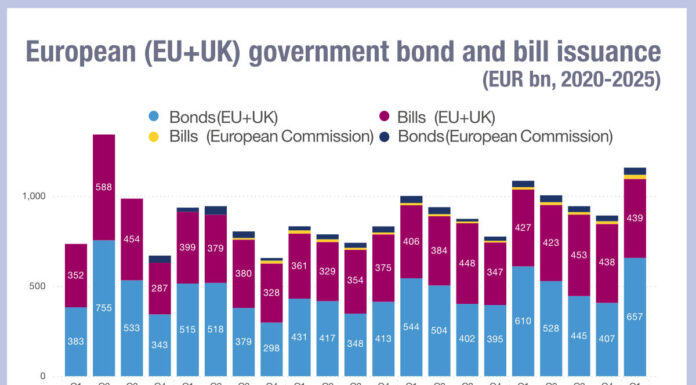In November 2020, we assessed the prevailing research on the size of portfolio trading in the corporate bond market. A new report from Coalition Greenwich, penned by Kevin McPartland, head of market structure and technology research, has estimated that in 2020 portfolio ‘buy’ trades saw an average 7.5 basis points (bps) price improvement and sells achieved 9.2 bps, when compared against the most recent price that a bond traded at according to Bloomberg’s BVAL mid-price. In total 72% of trades saw price improvement. This suggests that portfolio trading has real value, and therefore growth prospects.

The value that portfolio trading provides is more than just price, as the report acknowledges. If a counterparty can price for a liquid bond on the condition that they also price for an illiquid bond it seems to encourage them. Bonds with a Tradeweb liquidity score of 3 or less (on a scale of 1–10) are traded 55% higher in a portfolio trade.
The DESK’s research in Q4 last year found that as a protocol portfolio trading accounted for 5% of trading for active portfolios (4% with dealers in competition, 1% non-competitive) and 4% for passive portfolios (all in-comp).
Interestingly, the Coalition Greenwich research found that 44% of traders received a competitive quotes from more than one dealer over 75% of the time with another 22% finding in-comp bids got competitive quotes from dealers between 50% and 75% of the time. It also noted that Tradeweb has seen in-comp deals the majority of the time.
Some of the biggest barriers to the use of portfolio trading, the report found, were in the ability of an asset manager to assess the value of a trade, and to interpret the value to a client or to compliance.
A trader may have a range of priorities for different orders, and a portfolio trade could satisfy different priorities simultaneously. A portfolio trade could help to buy an illiquid bond which was otherwise unavailable for above current market price while also delivering price improvement on buying other bonds which are more liquid; explaining these different advantages to the compliance team in an efficient way is very challenging.
Adoption of PT is not high – just 22% of US traders and 18% of European traders have executed a portfolio trade in the past year according to Coalition Greenwich. Yet McPartland argues that the 3–5% of volume for which portfolio trading currently accounts for “could easily grow to 8–10% within 18 months, depending on market volatility and other macro conditions.”
What will be interesting to track is where it grows in the corporate bond space. As a tool it is ready made for use by exchange traded fund managers, so its higher use in the high yield credit space – approximately 5% of value traded in the US – is likely to reflect the value that it offer to firms looking for liquidity in the HY market, as opposed to the more liquid investment grade (IG) market where it is closer to 3% of traded volume.
©Markets Media Europe 2025

























